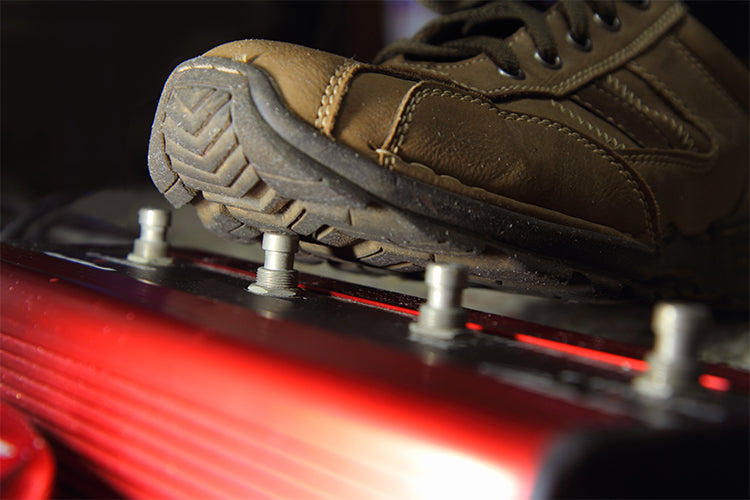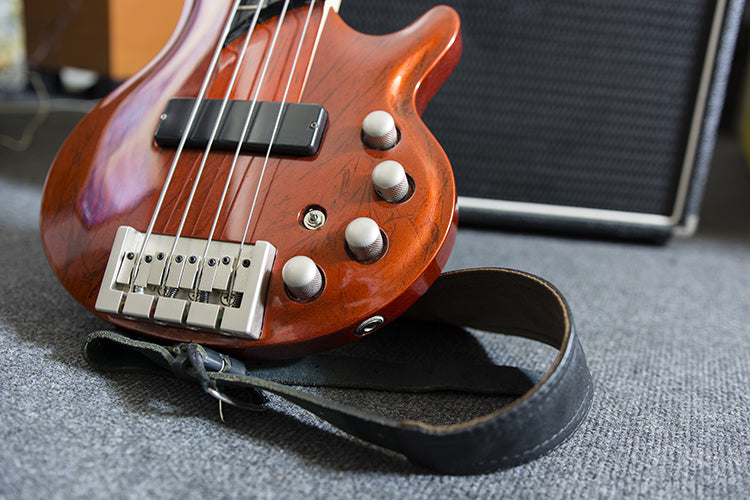-
Audio
-
Guitar
-
Bass
-
Blog
-
SALE
- Financing
- Support
- SINCE 1946
January 18, 2016

There exists an intricate and unique relationship between band members. With their varied goals and personalities, things have a way of getting tricky. Some members are more organized while others can be passive or direct. Musicians are by nature sensitive creatures, so inevitably a band becomes a loving, if somewhat dysfunctional family when the leader has what it takes to bind them together. Effective leadership within the band is imperative to create camaraderie, manage expectations, and get everyone on the same page. No matter what your band culture, here’s how you can ensure your group survives the ups and downs and doesn’t go astray:
December 09, 2015

The serial loop would run the effects in line: the guitar tones enter the input, flow through the pre-amp section, then through the effects loop, going out the effects loop send and returning on the effects loop return. Then the signal from the return of the effects loop goes through the power amp section, and finally comes out through the blaring loudspeakers. This basic loop is viable for most applications.
December 01, 2015

The bass players in a band play a key role in maintaining a rhythmic groove. Bassists create the entire music foundation upon which the other band members play. It takes more than mere juice and hefty speakers to immaculately replicate the output of your bass guitar. Fortunately, a plethora of gear is available to meet your requirements and let your music shine. Whether you are a novice player looking for your first amp, an aspiring bassist wanting to revamp your amplification setup, or an experienced player looking to renovate your rig, here are a few tips for choosing the right bass guitar amp and speaker cabinets to match your music, budget and the venues where you perform.
November 12, 2015

Guitarists have been mulling over which amplifiers work best for years without reaching any consensus. The guitar in a band has to stand out amongst the crowded stage. Guitar players tend to be opinionated and will swear by their half stack, full stacks or combo amps, depending on their personal preference. All three setups have been used to play different types of music in all kinds of situations. It’s hard to pin down specific reasons why one may select a particular setup over another in a specific situation. All this is to say we will not be giving you any definitive answers, rather we will sound out some pros and cons for combos and stack setups to help guide your decision.
November 05, 2015

Purchasing the right microphone for your needs is not a simple task. Mics come in a variety of shapes and technologies, each suited for a particular purpose. There are also mics on the market, which can be used for a wide range of applications, but you still need to ensure they fit the bill for your specific situation. Two important factors when selecting a mic are the type of environment and the equipment with which the mic will be used.
October 29, 2015

Getting a big gig is always fun when you are playing in a band. Every gig is different and can require different things. You need to consider each type of show separately without grouping them all as the same. You cannot expect to act the same way at a corporate gig as you would playing a show for a club. When preparing for your gig, you want to consider the environment in determining how to approach it. Some shows may require that you turn them down. If you feel that the place of the show is constraining and requires you to act different than who you are, you want to politely refuse it rather than compromising yourself. Should you decide to accept the gig for a corporate show, there are some etiquette rules you need to consider.
October 28, 2015
Gig bags come in all shapes and sizes to accommodate your instrument, in a format that is easy to carry and, if constructed well, offers real protection for your investment. Over the years the trend of new bags is toward tougher water-resistant materials, comfortable padded shoulder straps, and “lots and lots” of pockets to store stuff in. Overall they have made the life of a working musician easier.
October 21, 2015

October 15, 2015

Whether feeding a live mix or laying it down in the studio, an important part of your guitar sound usually involves placing a mic or mics in front of your combo or stack. You may have your technique dialed in or, like most of us, are still searching for that signature sound. That tone is ringing in your head, but not coming out in the mix.
October 05, 2015

September 30, 2015

Even if your organizational skill matches your amazing musical skill, there eventually will be a gig that was predestined to humble you. We’ve all been there looking frantically through a gig bag hoping that the “one” thing that is desperately needed will magically appear, that another musician will have it in their bag or a music store is right next door. Either way, you either have to make do, succumb to failure or forever owe someone for saving the night.
August 12, 2015
Having a basic understanding of the anatomy of your guitar amplifier will go a long way towards getting the most out of your system. While designs vary and there are a lot of model-specific features available, all guitar amplifiers have the same basic components, with additional optional components adding features to the more complex models.
Sign up to get the latest on sales, new releases and more…
NoFraud Frequently Asked Questions
"Make a joyful noise unto the Lord all of the earth; make a loud noise and rejoice and sing praises. Sing to the Lord with the harp and the voice of the psalm." - Psalm 98:4-5
© 2025 Carvin Audio.
Carvin Corp.
POS and Ecommerce by Shopify
